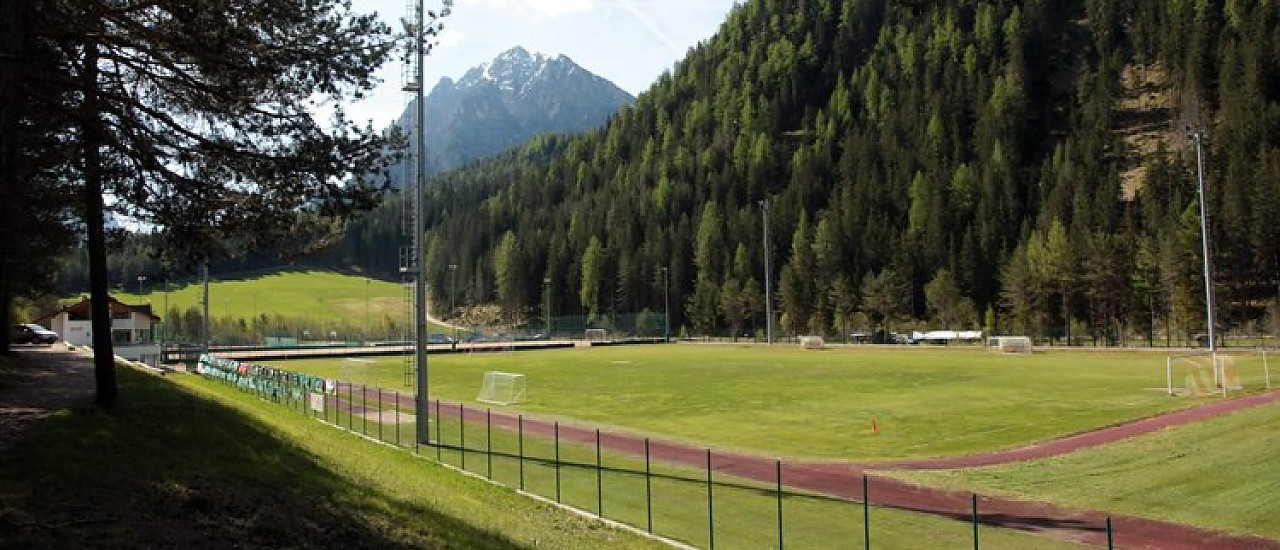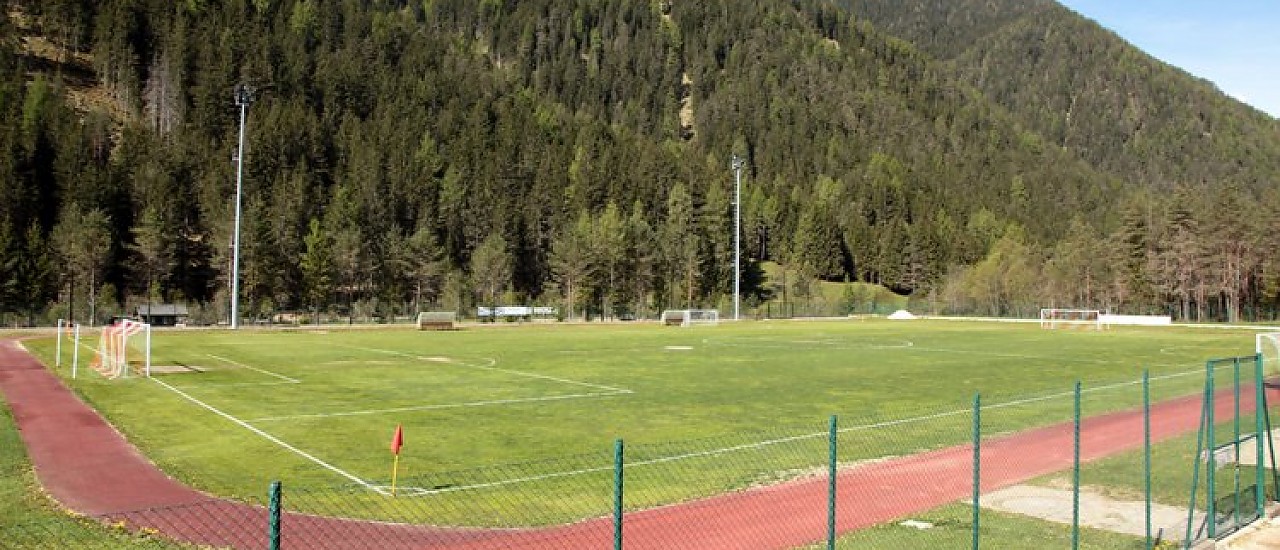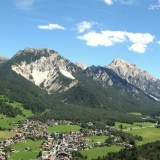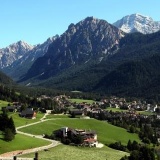Al Plan de Mareo / St. Vigil in Enneberg
The football pitch in the sports zone “Al Plan” is the setting for the matches in Al Plan de Mareo / St. Vigil in Enneberg. The pitch is located at the western end of the village at the entrance of the Rautal Valley, famous for its miles long hiking and cycling paths. The sports infrastructure, harmoniously embedded into the landscape, contains storage rooms, changing rooms and administration offices; the huge outside space, with its running tracks around the pitch, offers enough space for warming ups. In summer periods you have the chance to meet the famous ski siblings Manfred and Manuela Mölgg during their condition workouts; this is where they are at home. The sports zone is managed by the local football club ASC Mareo. For more impressions, please have a look at www.ascmareo.com
“To live happily and in harmony with nature”, the feeling of life as Seneca described, is what you will experience in the small village of Al Plan / St Vigil at the beginning of the Enneberg Valley, a side-valley of the Badia Valley, in the heart of the South Tyrolean Dolomite Mountains. The village can look back at a history of thousand years. The people speak Ladin here, a 2000 year old, Neo-Latin dialect from the Roman era. Many people call this language “the language of the Dolomites”. The village of Al Plan de Mareo (Ladin), or St Vigil (German) has 1,300 inhabitants. Plunge into the Ladin feeling of life, experience the special tradition and culture and feel the warm hospitality of the Ladins.
The Alpine character of the village blends perfectly with the natural landscape of the mountains. Relatively small houses build from South Tyrolean wood and based on a simple construction according to Alpine design, captivate because of their traditional architecture. The centre of the village is the baroque parish church. This is where people meet, get to know each other and do their shopping. Surrounded by unspoiled nature in the UNESCO World Heritage Site Dolomites, by dense forests and green meadows, the village square invites you to stay and relax.
Al Plan / St Vigil is perfect for families, for the active and those who want to enjoy: mountaineering, hiking, mountain biking, climbing, fishing, riding horses, visiting the Fanes Sennes Prags nature reserve or reading exciting sagas from the Dolomites – a summer holiday in Al Plan / St Vigil has a lot to offer. Make a stop in one the old mountain huts of the Dolomites and enjoy the traditional South Tyrolean cuisine. For adventurers: Al Plan / St Vigil has the longest zip-line of Europe.
Also in the winter holiday there is a lot to do: skiing in the Dolomite Superski-area, ski tours, cross-country, a ride with a horse-drawn sleigh, sledging or snowshoe hiking in the Fanes Sennes Prags nature reserve. The Kronplatz skiing area has the perfect conditions for skiing and snowboarding and is part of Dolomiti Superski, the largest connected ski-area of the Alps with 1,220 kilometers of slopes. Slopes of all difficulties are excellent for a winter holiday with children in the Dolomites World Heritage Site.
“Bëgngnüs te nüsc paîsc y te nostes valades!”
(Welcome to our villages and our valleys!)
A population's unique character finds expression in its language, with its rough and smooth edges reflected in its intonation. It is always a pleasure to listen to an (as yet) unknown language: when you hear the sometimes harsh, sometimes sweet beauty of its sounds. And so it is with the Ladin language, which reflects the untamed beauty of the Dolomites and expresses the creativity and stamina of the people.
Everyday Ladin
Ladin is the native language of around 30,000 Ladin people. It is a school subject and is used in everyday life. Guests to the area also experience this when they find Ladin names on the trilingual topographical signs and Ladin inscriptions on buildings and shops right from the start. It is heard in hotels, in Ladin radio and television programmes, while shopping and on the village square. Printed material is also invariably issued in three languages: in Italian, German and Ladin.
Origin and development
Ladin is a Romance language and developed from the merging of the Rhaetic of the indigenous population with the vulgar Latin of mercenaries and merchants. The isolation of the valleys and the location of the Ladin area between the Italian and German linguistic areas have always encouraged the development of linguistic variants. More recently, one common development of the language has been hindered by inconsistencies in the recognition of Ladin as a language in its own right: the valleys around the Sellastock Range (Badia Valley, Gherdëina Valley, Fodom Valley, Fassa Valley and Cortina) sprawl across three Italian Provinces – Belluno, Trento and South Tyrol. The Ladin inhabitants of the Province of Bolzano/Bozen are officially recognised as being the third ethnic group and are given active support in safeguarding their culture and language by the Province.
Written Ladin
Books in Ladin have existed for a few decades thanks to efforts made to maintain the language. This started with the publishing of the first Ladin grammar book in 1833 by Micurà de Rü. His basic concept was to develop the language looking ahead to the future and to promote a common written language for all Dolomite Ladin people. The Ladin Cultural Institute Micurà de Rü was founded in 1976 with the aim of preserving, further developing and promoting the Ladin language in print and colloquial language and also the Ladin culture. Consequently, this 2000-year-old, Neo-Latin language from Roman times is lovingly cared for and prevented from disappearing.











